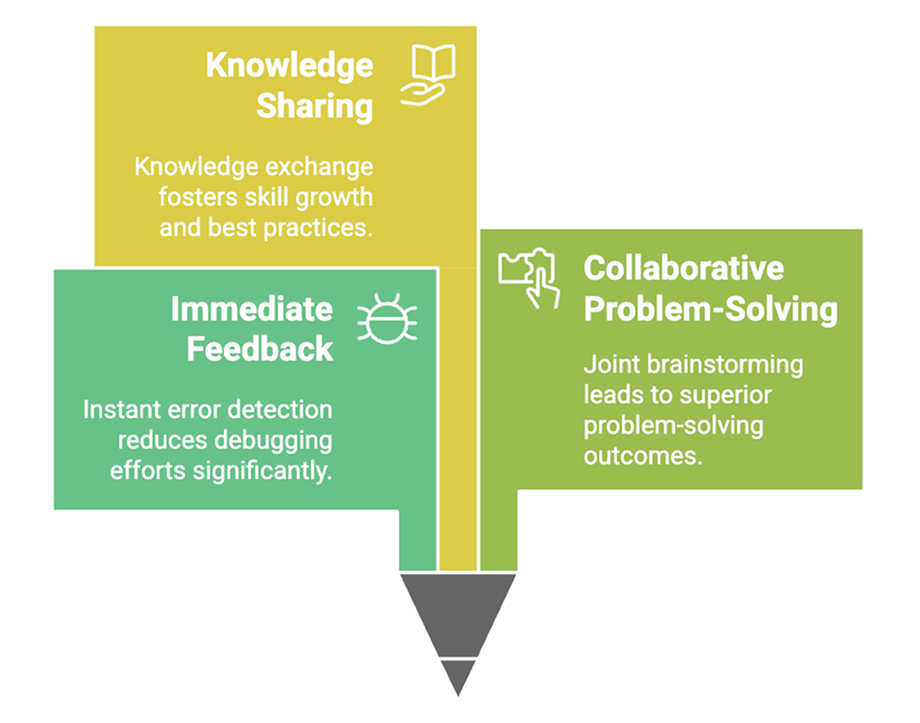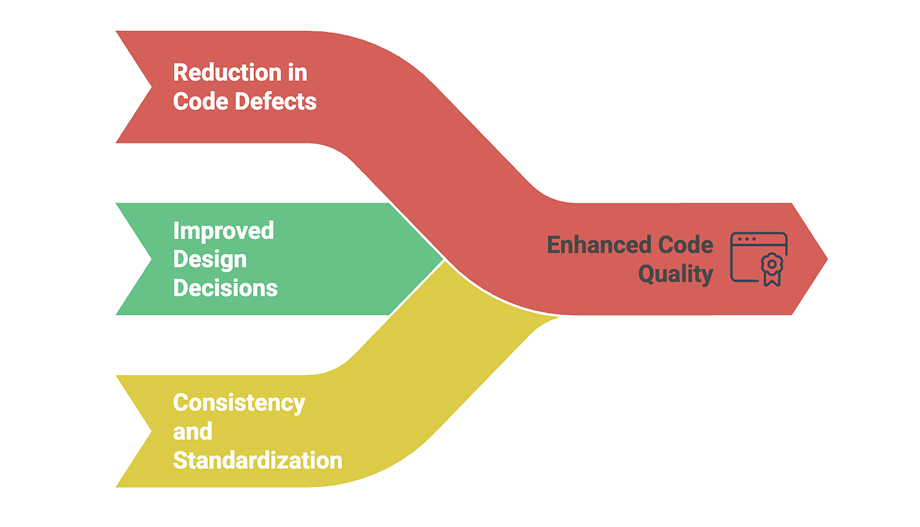How does pair programming improve code quality?
What is Pair Programming
Over the last few years, the use of pair programming has drastically increased with Agile and extreme programming (XP). It consists of two programmers working concurrently, assuming defined supportive roles.
One programmer is the driver (who inputs the code), while the other is the navigator (who supervises and advises the driver as they code). They frequently change roles to stay engaged and balance their cognitive effort. This collaboration strategy enhances the code quality by reducing errors and design choices.
Key Benefits of Pair Programming

1. Immediate feedback and error reduction
Errors get detected instantly during coding as both pairs monitor the development process simultaneously. Pair programming reduces debugging efforts while ensuring production defects are kept at a minimum level.
2. Collaborative problem solving
The collaboration between two developers produces better results than working independently. Pair programming enables better problem-solving, as the two developers can brainstorm, discuss, and evaluate multiple approaches to a coding challenge.
3. Knowledge sharing and skill development
Pair programming also serves as a knowledge-sharing tool within a development team. The knowledge exchange between junior and senior developers allows developers to acquire the best coding practices, effective debugging methods, and efficient programming tactics.
Enhanced Code Quality Through Pair Programming

1. Reduction in code defects
Pair programming involves two developers working side by side to review and write code together. This combination helps catch issues early, from simple typos to more serious bugs that could become larger problems. As a result, the code is more reliable and has been better tested from the start.
2. Improved design decisions
Pair programming naturally leads to better design decisions. The constant code analysis by the navigator and the consideration for future scalability produce scalable, modular, maintainable software. Such practices guarantee that modifications to the software will be made more efficiently over time.
3. Consistency and standardization
Pair programming ensures that developers adhere to coding standards, as the navigator enforces best practices and refactors code as needed. Brand new code sections become more standardized as team members continue working independently during the same project period.
Tools and Technologies Supporting Pair Programming
With the rise of remote work and distributed teams, several pair programming tools have been developed to facilitate collaboration. These include:
Traditional pair programming tools:
- Visual Studio Live Share (real-time collaboration within the IDE)
- CodePen (browser-based code sharing)
- GitHub Codespaces (cloud-based development environments)
AI pair programming tools:
- GitHub Copilot (AI-assisted code generation)
- Tabnine (predictive AI suggestions)
These tools enhance the pair programming experience by enabling real-time collaboration, even for remote teams, while AI pair programming tools improve efficiency.
Challenges and Considerations
While pair programming offers many advantages, it also comes with challenges that organizations must address:
- Increased short-term costs: Two developers working on one task results in higher initial expenses than single-developer programming does.
- Coordination issues: Effective pair programming requires good communication and compatibility between the paired developers. Productivity will decrease when developers have different skill levels or opposing work styles.
- Fatigue and burnout: Pair programming requires constant focus and collaboration, which can be mentally draining over long periods. Teams should take regular breaks and rotate pairs periodically to keep energy levels high and maintain fresh perspectives.
Conclusion
Pair programming has proven valuable in software development, enhancing code quality through real-time error detection, collaborative problem-solving, and knowledge sharing.
Thanks to remote collaboration tools and AI assistants, pair programming is now easier and more practical for modern development teams. It’s becoming a flexible and effective way to build better software together, no matter where team members are.
